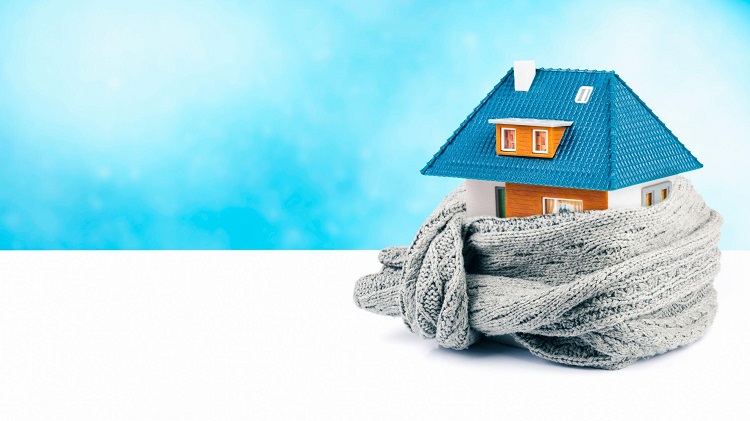Proper insulation is a key factor in maintaining comfortable indoor temperatures throughout the year while reducing energy bills. A well-insulated home minimizes heat loss during winter and keeps the interior cool in summer, making it more efficient and environmentally friendly. Whether you’re looking for simple DIY steps or more extensive upgrades, these seven methods will help you create a more energy-efficient living space.
Table of Contents
Check for Air Leaks
Air leaks are a common cause of energy inefficiency, allowing warm air to escape or cold air to seep into your home. Start by inspecting doors, windows, basements, and electrical outlets for drafts, which are often more noticeable on windy days or near cool areas. For an easy way to detect leaks, try holding a lit incense stick near potential trouble spots; if the smoke wavers, there’s likely a draft.
Once you’ve identified the leaks, seal them with weatherproofing materials such as silicone caulking for cracks or adhesive-backed foam strips for window edges. By addressing these issues, you can noticeably enhance your home’s comfort and reduce heating or cooling costs.
Seal Gaps Around Ductwork
Heating and cooling ducts are often overlooked when improving home insulation, yet gaps or leaks in ductwork can lead to significant energy losses. Over time, small gaps develop around duct connections, particularly in basements or attics. These inefficiencies force heating and cooling systems to work harder, raising your energy consumption.
Use mastic sealant or metallic duct tape (not standard household tape) to secure any openings in your ductwork. Pay special attention to joints and elbows, as they are most prone to leaks. For homeowners looking to go a step further, consider insulating the ducts themselves with pre-formed duct insulation sleeves. This ensures that air traveling through the system retains its intended temperature until it reaches your living spaces.
Add Caulking and Weatherstripping
Windows and doors are the primary culprits of heat transfer. Cracks around window frames or poorly sealed door edges can contribute to significant energy loss. Adding caulking and weatherstripping is a low-cost, high-impact solution to this issue.
Apply exterior-grade, all-weather caulking to close any visible cracks around window frames or trim. For doors, install foam or rubber weatherstripping on the bottom and sides to create a snug seal when closed. For sliding windows or doors, consider using draft stoppers or track vinyl liners to further boost their efficiency. By addressing these small details, you can make a substantial difference in your home’s insulation.
Repair or Replace Your Water Heater
Repairing or replacing your water heater is a crucial step in improving your home’s energy efficiency and maintaining comfort. Signs that your water heater may need attention include inconsistent water temperatures, longer wait times for hot water, unusual noises from the unit, or a sudden increase in energy bills. Neglecting these issues not only disrupts daily activities but can also lead to higher operational costs over time. Upgrading to a modern, energy-efficient water heater—such as a tankless model or one with high Energy Factor ratings—provides numerous benefits. These units heat water on demand or operate more effectively, reducing energy waste and lowering utility costs. Additionally, newer models are designed to last longer and often come with advanced features like programmable thermostats, further enhancing efficiency and convenience for your household. For more about this topic, you can research which water heaters best fit your home and your plumbing situation, what best fits your budget, and just how much time and effort the project is going to take.
Install New Windows
Replacing old, outdated, and worn-out windows with new, energy-efficient models, such as ones that can be found through providers like Dalco, is a significant step toward improving your home insulation. New windows are designed to reduce heat transfer and come in various materials, such as vinyl, wood, and fiberglass, making them a valuable consideration for most homeowners.
Add Insulation to Exterior Walls
Exterior walls are another common area for energy waste, especially in older homes with minimal insulation. Adding insulation to these walls can significantly improve your home’s energy retention. Options include rigid foam boards, fiberglass batts, or even spray foam for areas that need a custom fit.
For a more sustainable option, consider using eco-friendly insulation materials like cellulose (made from recycled paper) or mineral wool. While this project may require professional installation, it offers long-term economic and environmental benefits by improving your home’s thermal performance.
Insulate Your Attic
Up to a quarter of a home’s energy loss occurs through an under-insulated attic. Addressing this area is one of the most impactful steps in creating an energy-efficient home. First, assess your attic’s existing insulation to determine if it meets recommended thickness levels, typically 10-14 inches for materials like fiberglass or cellulose. If it falls short, add additional insulation where needed.
Spray foam insulation is particularly effective in sealing gaps and hard-to-reach corners. For DIY-friendly options, consider using fiberglass rolls or batts, which are easy to cut and position. You can also install an attic hatch cover to prevent air from escaping through the entryway. These steps will help regulate temperature, reduce wear on your HVAC system, and ensure year-round comfort.
Improving your home’s insulation doesn’t have to be daunting; even small upgrades can make a significant difference in creating a more energy-efficient and comfortable living space. By addressing air leaks, upgrading windows, or adding attic insulation, you can not only reduce energy bills but also minimize your environmental impact. For more complex tasks, consulting insulation professionals can help ensure that your home’s specific needs are met with the right solutions. Taking these steps today can lead to lasting benefits in comfort, efficiency, and savings.

